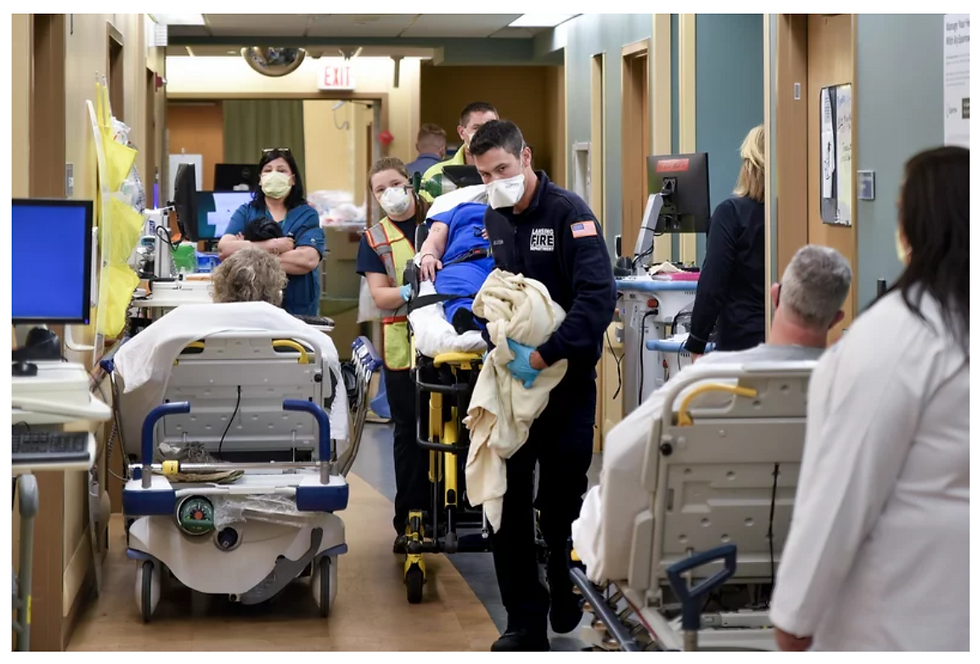ATA Annual Conference 2017: Here's What We Learned
- Joe Ebberwein

- Apr 26, 2017
- 3 min read
Updated: Mar 30, 2021

We highlighted in our blog some time ago that Telehealth is much more than technology. We explained that Telehealth is a tool to be used by healthcare providers to improve the care of their patients while increasing efficiencies and lowering the cost of care.
Some of Corstrata’s leadership team attended the 2017 ATA annual conference of the American Telemedicine Association in Orlando. The number of companies offering a multitude of telemedicine platforms as well as those offering remote patient monitoring equipment has exploded since when we saw the first very expensive remote telehealth monitor in 2001. At that time, reimbursement for home health had been dramatically changed from per visit (fee for service) to 60 day episodic payments (precursor to value based care). This situation called for a radical change in our care delivery model, and technology was the answer for us. We could target our visits (clinically based use of resources) based on what the patient’s remote monitored vital signs indicated that day rather than based on an arbitrary visit schedule.
Today, the companies are offering less expensive, more sophisticated patient monitoring tools; they run the gamut from sensors in the patient’s home that monitor patterns in their activities of daily living to more expensive robots equipped with bidirectional video to enable the healthcare team to be “virtually” present to the patient, no matter the patient’s location. Additionally, there were displays of Virtual and Augmented reality innovations which will are most certain to make their way into the provision of care over the coming years.
What became apparent to us as we discussed these technologies with providers who are either new to telehealth or have been using it in their care delivery model for many years, is the fact that the only way to achieve a return on the investment in a telehealth program is to hardwire its use into the workflows of the provider. Otherwise, it becomes a very costly expenditure which produces no return on investment.
The investor community was present at the conference and searching for innovative technologies, but seemed even more interested in the companies who are using technology married to a service model to improve patient care at a lower cost. In the value based model of care delivery and reimbursement, the focus is on data which proves the clinical and financial outcomes so the integration of the telehealth solution into the EHR or a data analytics platform becomes paramount.
There were discussions regarding the ongoing struggles in the areas of state licensure as well as reimbursement issues which have been at the core of why many providers have not adopted telehealth. The American Telemedicine Association continues to be the voice of advocacy both with payers (including CMS) and state legislators so that state lines do not preclude the provision of good, cost-effective care through telehealth.
Our major takeaway is that Telehealth is growing and providers are coming to the conclusion that if they are going to be successful in the transition from volume to value-based care, they have to integrate technological advances into their care delivery model. The providers who look at Telehealth and other technologies as means to a better end of improved care at a lower cost will be the winners.
Corstrata utilizes mobile app and video technologies to create access to its board-certified wound care specialists to produce a return on investment for our customers. Corstrata assists providers in proper assessment of wounds during the initial assessment upon admission - whether the OASIS C2 in home health or the MDS in the skilled nursing facility. Additionally, Corstrata wound experts collaborate with providers to develop a wound program that includes evidence based, best practice wound treatments, staff education, pressure ulcer prevention program, and wound formulary redesign. Corstrata provides wound image and video consults that include accurate identification of the wound type and associated staging, precise wound measurement, and recommended treatment and wound dressing.
Contact us today for Expert Wound Care. Anywhere.





Comments